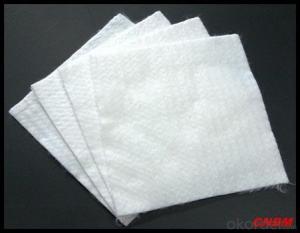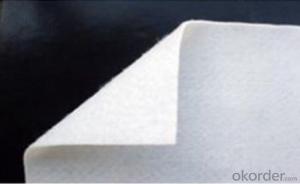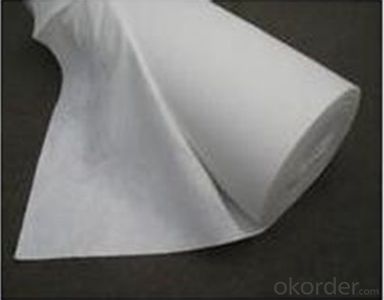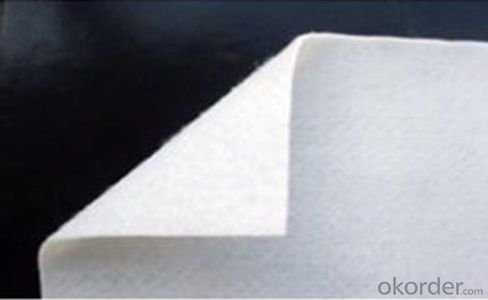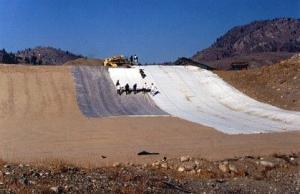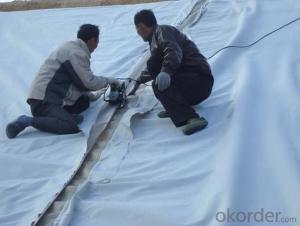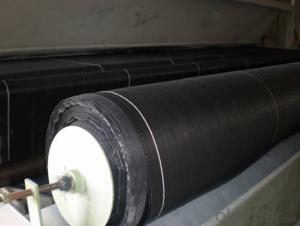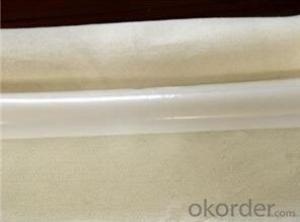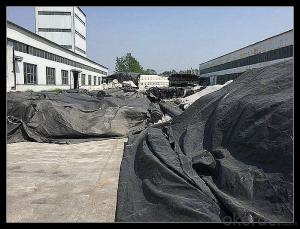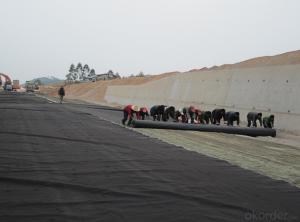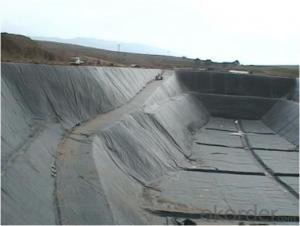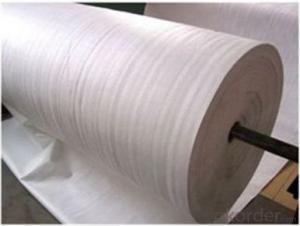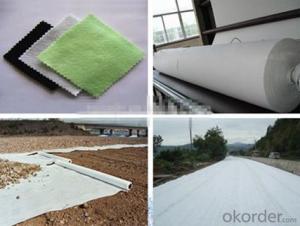Geotextile 100g Needle Punched Nonwoven Geotextile PP for Railway Construction
- Loading Port:
- China main port
- Payment Terms:
- TT OR LC
- Min Order Qty:
- 10000 g/m²
- Supply Capability:
- 100000 g/m²/month
OKorder Service Pledge
OKorder Financial Service
You Might Also Like
Specification
Material: | virgin PET. Recycle PET |
Color: | White, black ,grey or as your demand |
Technical: | Needle punched and thermally bonded |
Width: | Max we can do is 6m |
Length/roll | As your demand |
Package: | PE film and woven bag outside or as your demand |
Product time: | Usually Within two weeks |
Usage: | 1.Filtration The filtration layer of the dykes, river canal, seacoast, concrete slope, retaining walls. At the same time of preventing the clay granule from passing, it allows the water and the gas pass through freely. |
2.Separation: , surface of theairdrome and parking lot and the groundsill, different dam materials. It isolates the soil and the gravel of two kinds different granule pathway from the groundsill or other buildings. | |
3 Adding muscle: retaining wall, slope protection, etc in which distributes the earth stress, prevents the side-displacement of the earth body and improves the earth body stability. | |
4 Protection , prevents the water and soil from being washed away. | |
Payment: | 30T/T in advance+70% T/T against all the copies of the original docunemnts or L/C at sight |

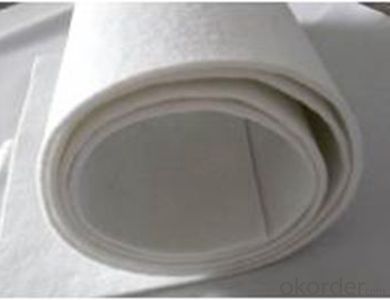
FAQ:
Q: What kind of payments does jenor support?
A: T/T, L/C, Cash are accepted.
Q: Do you charge for the samples?
A: Accordeing to our company policy, the samples are free, we only charge the freight fee. And we will return the freight fee during the next order.
Q: Can you produce according to customers' design?
A: Sure, we are professional manufacturer, OEM and ODM are both welcome.
Q: Do you have other products?
A: Yes, please check the pictures:
- Q: How do geotextiles help with filtration in stormwater management?
- Geotextiles play a crucial role in stormwater management by providing filtration and erosion control. They act as a barrier, allowing water to pass through while capturing sediment and pollutants. This helps to improve water quality and prevent contamination of natural water bodies. Additionally, geotextiles can enhance the performance of stormwater systems by reducing clogging and promoting efficient drainage.
- Q: What are the benefits of using geotextiles in erosion control?
- Geotextiles offer several benefits in erosion control. Firstly, they provide stability to the soil by preventing its movement and retaining sediment, which helps in preventing erosion. Secondly, they allow water to pass through while trapping sediment, reducing the velocity of flowing water and minimizing the chances of soil erosion. Additionally, geotextiles promote vegetation growth by providing a suitable environment for plant roots to establish, leading to improved soil stability. Lastly, they are cost-effective, easy to install, and have a long lifespan, making them a sustainable solution for erosion control.
- Q: How do geotextiles improve the performance of coastal structures?
- Geotextiles improve the performance of coastal structures by providing erosion control, stabilizing the soil, and enhancing drainage. They act as a barrier to prevent soil erosion, reducing the likelihood of structural damage caused by waves, tides, and storm surges. Geotextiles also help stabilize the soil by increasing its shear strength, preventing the movement and settling of the structure. Additionally, they enhance drainage by allowing water to pass through while retaining the soil particles, preventing clogging and maintaining the structure's stability. Overall, geotextiles play a vital role in increasing the durability and longevity of coastal structures.
- Q: What are the applications of geotextiles in coastal engineering?
- Geotextiles are widely used in coastal engineering for various applications such as erosion control, shoreline stabilization, and coastal protection. They are commonly used as a barrier to prevent soil erosion and provide stability to coastal structures. Geotextile tubes or bags filled with sand or other materials can be used to create seawalls, groynes, and breakwaters, reducing wave impact and protecting coastlines from erosion. Additionally, geotextiles can be used in beach nourishment projects to enhance the resilience and longevity of sandy beaches. Overall, geotextiles play a crucial role in coastal engineering by providing cost-effective and sustainable solutions for coastal protection and management.
- Q: Roof of the geotextile
- Garage, roof green Huazhi geotextile manufacturers, solutions
- Q: How do geotextiles help with erosion control on shorelines?
- Geotextiles help with erosion control on shorelines by providing a physical barrier that prevents soil erosion, while allowing water to pass through. They stabilize the soil, reduce wave energy, and trap sediments, effectively protecting the shoreline from erosion caused by currents and waves.
- Q: Do geotextiles and geogrids do check-in?
- Required, geotextile and geogrid material is qualified. But actually depends on the situation to set.
- Q: What are the key factors affecting the clogging behavior of geotextiles?
- The key factors affecting the clogging behavior of geotextiles include the particle size and gradation of the soil or other material being filtered, the permeability and porosity of the geotextile, the hydraulic loading conditions, the presence of fines or clay particles in the soil, and the duration of exposure to clogging agents. Other factors such as the geotextile's physical and chemical properties, the presence of biological organisms, and the maintenance practices also play a role in determining the clogging behavior.
- Q: How do geotextiles aid in the protection of geomembranes?
- Geotextiles aid in the protection of geomembranes by acting as a protective barrier between the geomembrane and the surrounding soil or other materials. They prevent direct contact and potential damage from sharp objects, rocks, or roots, while allowing for the drainage of water and gases. This helps to extend the lifespan of the geomembrane and maintain its integrity, ensuring effective containment and protection in various applications such as landfills, ponds, or construction projects.
- Q: How do geotextiles contribute to the environmental sustainability of construction projects?
- Geotextiles contribute to the environmental sustainability of construction projects by providing erosion control, improving soil stability, and reducing the need for excavation and disposal of excess soil. They help prevent sediment runoff into nearby water bodies, promote vegetation growth, and prevent contamination of groundwater. Geotextiles also enhance the longevity of infrastructure by providing reinforcement and filtration, thereby minimizing the need for frequent repairs and replacements. Overall, their use reduces environmental impact, conserves resources, and contributes to the long-term sustainability of construction projects.
Send your message to us
Geotextile 100g Needle Punched Nonwoven Geotextile PP for Railway Construction
- Loading Port:
- China main port
- Payment Terms:
- TT OR LC
- Min Order Qty:
- 10000 g/m²
- Supply Capability:
- 100000 g/m²/month
OKorder Service Pledge
OKorder Financial Service
Similar products
Hot products
Hot Searches
Related keywords
